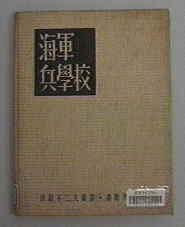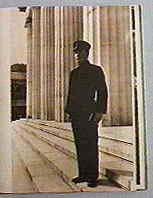TopMenu

Saeki Kakugoro
(JCII Photo Salon, Curator, Japan Camera Museum Management)
Chapter 3
A new photographic expression from Leica has been born
 Even though Leica was the first to have amazing functions, using these caused many problems. When you think about the camera information of today, if the camera is of a big size, it is normal for the negative to have an area of kyabine etc. The smallest being 6 x 9 cm. The atom (6 x 4.5 cm) is too big for the 35mm models. However, looking through the finder and focus glass, with the leica it was normal to be able to adjust the image by hand and with the finder using the reverse Gallilleo system, the subject can be seen smaller. But for people who have got used to the big cameras of today, they criticize the set boundaries saying you can't make sure of the subject's movements and expressions well enough.
Even though Leica was the first to have amazing functions, using these caused many problems. When you think about the camera information of today, if the camera is of a big size, it is normal for the negative to have an area of kyabine etc. The smallest being 6 x 9 cm. The atom (6 x 4.5 cm) is too big for the 35mm models. However, looking through the finder and focus glass, with the leica it was normal to be able to adjust the image by hand and with the finder using the reverse Gallilleo system, the subject can be seen smaller. But for people who have got used to the big cameras of today, they criticize the set boundaries saying you can't make sure of the subject's movements and expressions well enough.
By attaching a 135mm lens, the finder becomes even smaller. However even if there are some disadvantages like these, the mobility function is good and the rapid shooting function is good so for a long time in Japan too, it was very popular. When accredited master Yoonotsuke established the Japan workshop a member, Ihei Kimura opened a cultural photographic exhibition on the 2nd floor of the Kinokuniya in Tokyo's Ginza with portraits of cultural people. This gave him a huge reputation.
 At the first company to import Leicas 'The Shumit Co. Ltd.', Inoue Atsumi was the person in charge of Paul Borufu's art collection who is reputed to always have a Leica handy, published 3 books: 'Leica Photographic Exposays', 'Leica photographic perfection', and 'Leica Photography' . in 1941-2 the cost was about 8 yen. From then on Leica's popularity took off. On the right hand page, there was a major work and on the left hand page there were things to look out for and the data was delicately inserted. You could say that all you needed to master a Leica was written in this book.
At the first company to import Leicas 'The Shumit Co. Ltd.', Inoue Atsumi was the person in charge of Paul Borufu's art collection who is reputed to always have a Leica handy, published 3 books: 'Leica Photographic Exposays', 'Leica photographic perfection', and 'Leica Photography' . in 1941-2 the cost was about 8 yen. From then on Leica's popularity took off. On the right hand page, there was a major work and on the left hand page there were things to look out for and the data was delicately inserted. You could say that all you needed to master a Leica was written in this book.
I have recently had the chance to see the well-known Fujio Matsugi's 'Navy College' (published 1943, 750 yen). Most older folk would know him very well. When looking at the explanations of the photographic collection, it seems as if it is a work that explains the workings of the Dill, the 2nd edition Dilla, the Erma 35mm. 50mm, 90mm, the Hektaar 135mm lenses and the Leica focussing lenses. The works on the title page go from explaining focussing to exposure, the advantages of using a filter, flash usage, film usage and explaining everything up to developing.
It had the same image as Paul Borufu's exposition where in a time when Japan was very
poor of materials in the 2nd WW, these thoughts were brought to light. Out of this photo era which was not like anywhere else, having Leica's model example, representative works by Mohan Sakurai became like a national policy.
The cut is Matsugi Fujio's 'Navy College'.

 Even though Leica was the first to have amazing functions, using these caused many problems. When you think about the camera information of today, if the camera is of a big size, it is normal for the negative to have an area of kyabine etc. The smallest being 6 x 9 cm. The atom (6 x 4.5 cm) is too big for the 35mm models. However, looking through the finder and focus glass, with the leica it was normal to be able to adjust the image by hand and with the finder using the reverse Gallilleo system, the subject can be seen smaller. But for people who have got used to the big cameras of today, they criticize the set boundaries saying you can't make sure of the subject's movements and expressions well enough.
Even though Leica was the first to have amazing functions, using these caused many problems. When you think about the camera information of today, if the camera is of a big size, it is normal for the negative to have an area of kyabine etc. The smallest being 6 x 9 cm. The atom (6 x 4.5 cm) is too big for the 35mm models. However, looking through the finder and focus glass, with the leica it was normal to be able to adjust the image by hand and with the finder using the reverse Gallilleo system, the subject can be seen smaller. But for people who have got used to the big cameras of today, they criticize the set boundaries saying you can't make sure of the subject's movements and expressions well enough. At the first company to import Leicas 'The Shumit Co. Ltd.', Inoue Atsumi was the person in charge of Paul Borufu's art collection who is reputed to always have a Leica handy, published 3 books: 'Leica Photographic Exposays', 'Leica photographic perfection', and 'Leica Photography' . in 1941-2 the cost was about 8 yen. From then on Leica's popularity took off. On the right hand page, there was a major work and on the left hand page there were things to look out for and the data was delicately inserted. You could say that all you needed to master a Leica was written in this book.
At the first company to import Leicas 'The Shumit Co. Ltd.', Inoue Atsumi was the person in charge of Paul Borufu's art collection who is reputed to always have a Leica handy, published 3 books: 'Leica Photographic Exposays', 'Leica photographic perfection', and 'Leica Photography' . in 1941-2 the cost was about 8 yen. From then on Leica's popularity took off. On the right hand page, there was a major work and on the left hand page there were things to look out for and the data was delicately inserted. You could say that all you needed to master a Leica was written in this book.